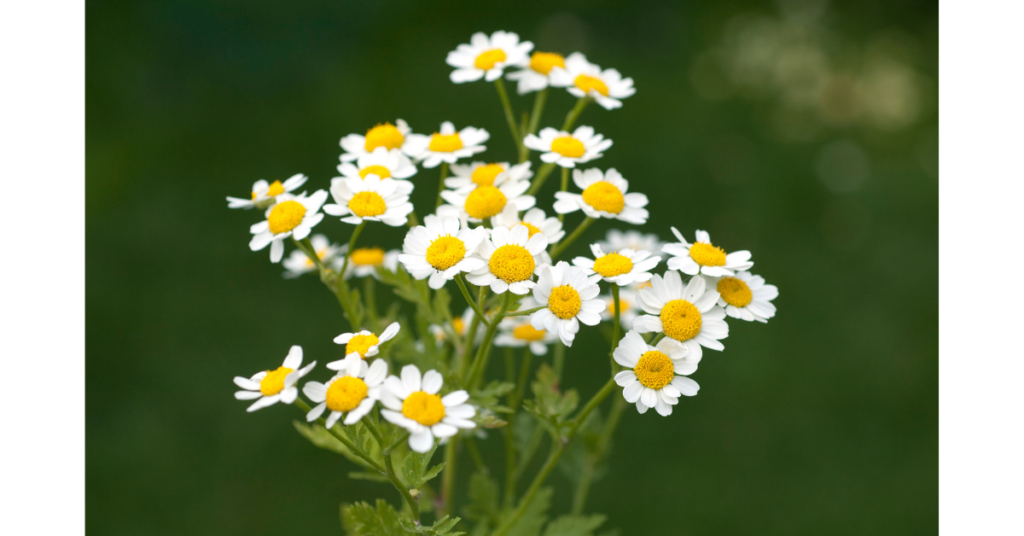Feverfew (Tanacetum parthenium)
The name derives from the Latin ‘febrifugia’ (loosely translated as ‘fever escape’), and has its roots in an old herbalist term ‘febrifuge’, that is, to reduce fevers. It is more commonly known as a treatment for migraines and headaches.
Other names: Featherfew, Chrysanthenum pateniuem.
Description and the places it grows in
Feverfew was naturalised in British and European gardens. It is perennial, sometime biennial with yellow and green leaves. The plant bloom mid-summer with flowers that are 1-2 cm wide with yellow middles and white petals.
Parts used
Dried leaves and / or dried flowering tops used.
Uses
Bitter, aperient, tonic.
Migraines and headaches: During a migraine attack, prostaglandins and histamines are released in the body, and it is thought that the sesquiterpene in the feverfew stops these two substances being released, thus preventing the blood vessels from spasming – the very thing that is thought to trigger migraines.
Skin conditions: Eczema and psoriasis respond well to this herb.
Convalescence: Candied feverfew leaves can be eaten raw.
Other uses: Feverfew relieves nausea, aids restful sleep, reduces fevers, supports adrenal glands, helps tinnitus, relieves vomiting, and reduces inflammation associated with arthritis. Taken as an infusion, it helps with digestive disorders. It can promote menstruation.
Constituents
Sesquiterpene, lactones (including parthenolide), volatile oils, and tannins.
Contraindications
The seeds contain small amounts of liver toxins, therefore feverfew should not be used by women who are pregnant. It should not be used by those who have schizophrenia either. Minor side effects include, bloating, nausea, indigestion, and headaches.


